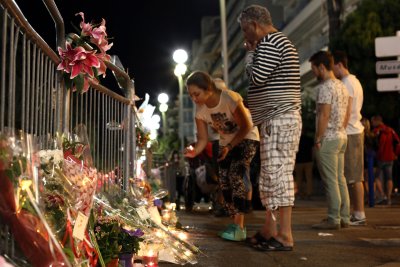Topic: Charlotte Corday
Marie-Anne Charlotte de Corday d'Armont (27 July 1768 – 17 July 1793), known to history as Charlotte Corday, was a figure of the French Revolution. In 1793, she was executed under the guillotine for the assassination of Jacobin leader Jean-Paul Marat, who was responsible for the Reign of Terror. His murder was memorialized in a celebrated painting by Jacques-Louis David which shows Marat after Corday had stabbed him to death in his bathtub. In 1847, writer Alphonse de Lamartine gave Corday the posthumous nickname l'ange de l'assassinat (the Angel of Assassination).
Born in Saint-Saturnin-des-Ligneries, now a hamlet in the commune of Écorches (Orne), in Normandy, France, Corday was a member of a minor aristocratic family. She was a descendant of the dramatist Pierre Corneille on her mother's side.
While Corday was a girl, her mother, Charlotte Marie Jacqueline Gaultier de Mesnival (1737-1782) and older sister died. Her father, Jacques François de Corday, Seigneur d'Armont (1737-1798), unable to cope with his grief over their deaths, sent Corday and her younger sister to the Caen Abbaye-aux-Dames. While there, Corday had access to the abbey's library where she first encountered the writings of Plutarch, Rousseau and Voltaire. After 1791, Corday lived with her cousin, Madame Le Coustellier de Bretteville-Gouville in Caen. Corday and Bretteville would become close companions and Charlotte was the sole heir to her cousin's estate.
It uses material from the Wikipedia article "Charlotte Corday."







